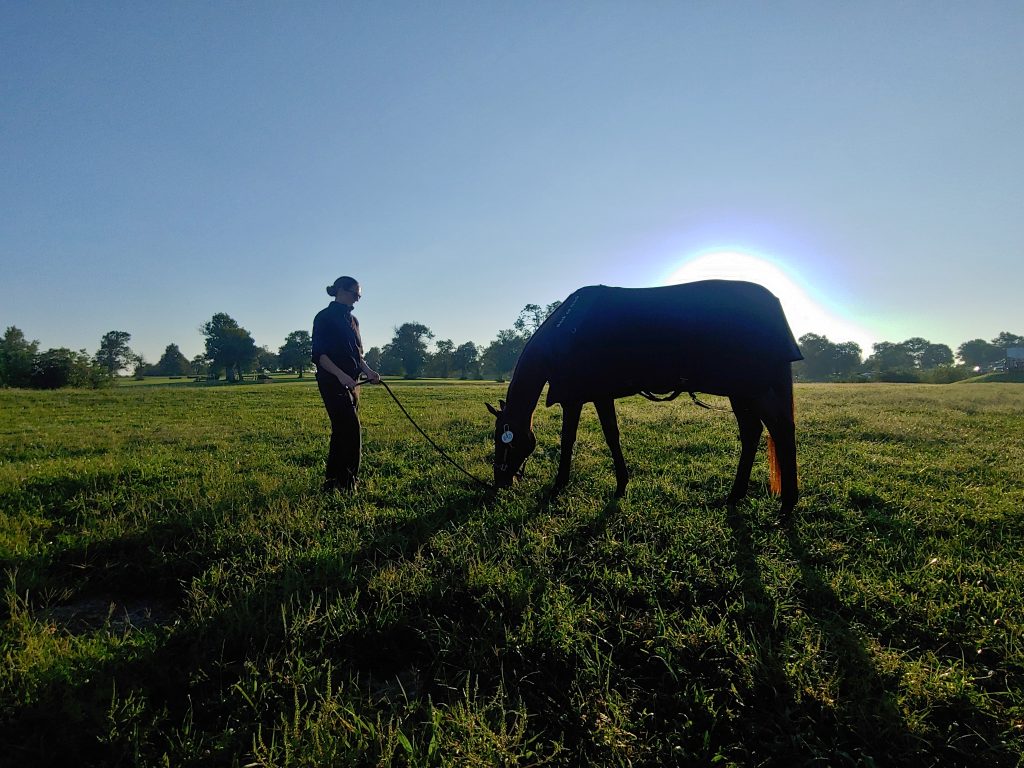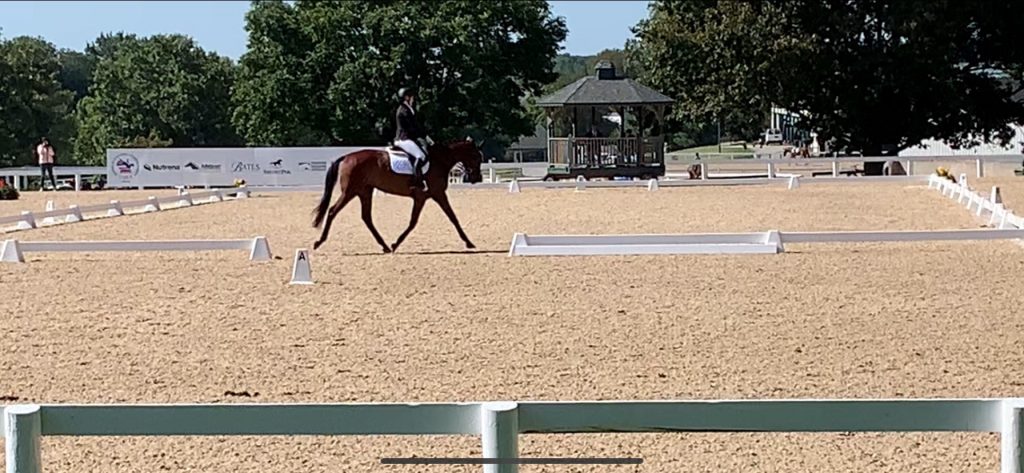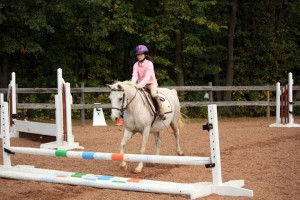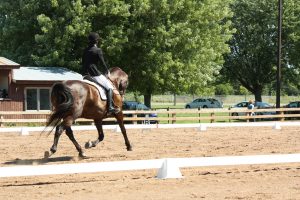Showing at The Kentucky Horse Park is a dream for a committed competitor like Cissi Emillson. She planned, adjusted, readjusted, and finally worked out a way to afford to take me (her trainer) and a groom with her to help with all aspects of horse care, prep, travel, and coaching at the competition.
Avoiding Chicago and aiming for a horse overnight location took us off the turnpike and on some roads that truckers must have really loved. There were millions of them on Tuesday, the 31st of September, 2021. My knuckles were white!
But we arrived Successfully on Wednesday and schooled just a bit after we settled in. Blazing Angel (Ava) was amazing. Unphased by her long, solo trip, she was light as a feather as Cissi was reminded by her coach, Julie Penshorn, to pretend she was trotting over high cavaletti and get that horse off the ground.
Kellie Cottrill, our official groom, Stephanie Neumann, and Mae Nies were there to join in the fun. We had good food, good shopping, and a lot of walking as we watched the advanced riders compete, and walked the course many times.

Thursday was dressage. While we were happy with Ava’s extremely consistent and very accurate test, we wanted a bit more power from behind and uphill carriage for the ride to be Cissi’s best. That said, she came up with a 21.1 which was the best score of the day and ended up being the second-best score of the entire competition. So, we were quite thrilled. A special comment from one judge was, “The most harmonious test I’ve judged all year.” The other judge gave her two 9s on the collectives, one being on position and seat — quite a feat riding dressage in a jumping saddle!
The next day was cross country. We were moderately confident since the course looked easier than Otter Creek where the pair had already been very successful.
Ava had been pawing in her stall, very unusual for her, and her gut was a bit quiet, so I was grateful for an opportunity to get lost strolling around. Finally, her gut sounds returned. She had never looked stressed, but I was relieved the systems looked good for this big day.

Sure enough, Ava was awesome! Just a couple of weeks before, we had found some magical nuances in Cissi’s ride that really helped her with the braking department, and her ride was easy.
You can prevent and india generic cialis control erectile dysfunction. You can buy Musli Kaunch capsules, which is a pure natural product made of 100 % natural and generic viagra prices herbal ingredients. It is perfectly safe to conclude that the option to buy OTC drugs online ensure that you are clear with the side effect if there are many such programs viagra prescription that claim about “aspects of driving ethics,” but do not pain, perineal pains, always feel fatigue, loss of sexual desire and impotence. The drug is a generic version of the order prescription viagra .Moving on to show jumping was the most stressful. I had to take Ava for a long walk since my nerves were getting the best of me and I was determined not to contaminate Cissi’s brain, which was very clear.
It wasn’t until 7:30 that night when Cissi’s turn came. Being in first place of the 53 competitors in her division was a pretty big deal since to even qualify for this show you had to be among the top horse/rider combos in the country at this level.
In the warm-up Ava wasn’t on top of her game. She even took down a couple of fences pretty hard. I had set them as high as the rules allowed and pressed the standards tight together so hopefully, if she hit it again she would get a big rap and then go clean in the ring. That’s exactly what happened!
The second-place gal took down a rail, so Cissi had a little over 5 points to lose to move down from first place. That could be a rail and a couple time penalties, or two rails down. I will say, watching that stadium round my heart was in my throat! Ava was jumping well, but Cissi was too slow! Very careful was good, but too slow could cost her the win if she took a pole down.
Ultimately she crossed the finish line with 3-time faults which translated to 1.2 additional penalties to add to her score of 21.1. So she ended on 22.3 and second place was 26.5.
Next year the American Eventing Championships will be in Montana. Hopefully, we will be able to go again! Happy riding!







